Introduction
When it comes to Vietnam’s history, the Nguyen Dynasty is an unforgettable period, starting with the reign of the Nguyen Anh Emperor (or Gia Long Emperor, 1762–1819). With Hue as the capital, the Nguyen Emperors left behind on this land significant monuments, such as the Imperial Citadel, royal tombs, and so on. Among them, Gia Long Tomb, the very first royal mausoleum in Hue, captures travelers’ curiosity.
The tomb of Gia Long Emperor lies on the top of Thien Tho Mountain, on the Perfume River’s west bank, 16 kilometers away from the heart of Hue City. In fact, Gia Long Tomb is a complex including numerous tombs of Emperor Gia Long, his mother, his wives, and other royal family members. Nowadays, the tomb is recognized as one of the UNESCO World Heritage.
How To Get To Gia Long Tomb Hue?
The Gia Long Tomb location is in Huong Tho Commune, Huong Tra District, Thua Thien Hue Province, which is 20 kilometers away from the city. It nestled beautifully on the greatest mountain in the area, called Thien Tho Mountain. It offers perfect surroundings for an emperor to rest forever.
The Gia Long Royal Tomb Map:
There are various ways to get to Gia Long Tomb. The most unique one is to take a dragon boat and go along the Perfume River (known as the Huong River). The tomb is pretty far, so it takes around two hours to get there by boat.
Apart from a boat trip, you can ride a bike or motorcycle, hire private cars, Grab bikes, or taxis. Yet, visitors unfamiliar with the routes should have local drivers/riders take them there instead of going on their own. The tomb is quite far away from the city center (20 kilometers).
Moreover, the best recommendations are our Hue tours with excellent private car transfers, well-informed tour guides, and intriguing attractions in Hue. See them as follows:
- Hue Royal Tombs Tour – 65 USD/pax
- Hue City Group Tour – 43 USD/pax
- Hue City Private Tour – 48 USD/pax
- Hue City Tour By Private Car – 43 USD/pax
- Hue City Tour Half Day – 31 USD/pax
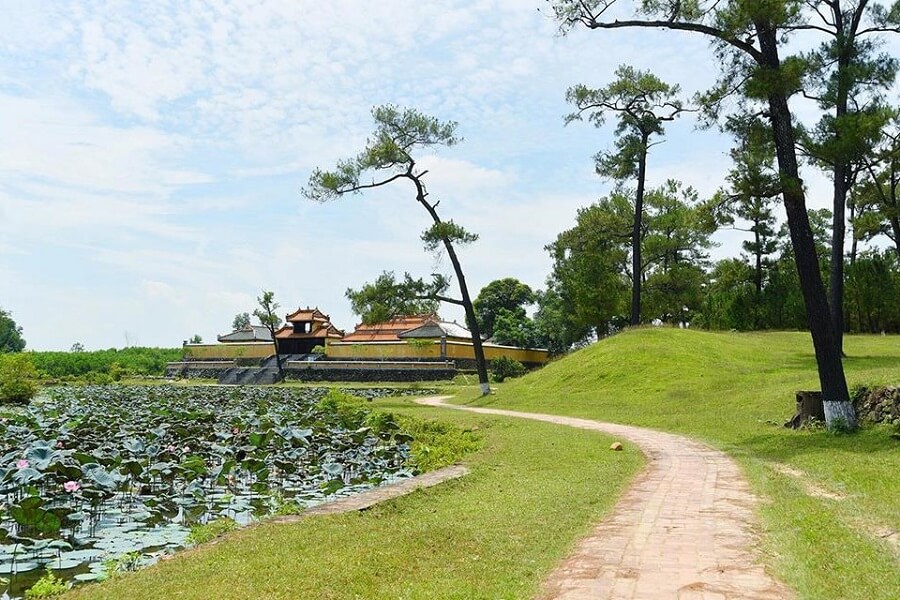
Gia Long Tomb Open Time And Entrance Fee
The entrance ticket costs 150,000 VND per person (about 6 USD). Children under 12 years old are free of charge.
It’s open from 7:30 AM to 5 PM, every day of the week.
The best time to visit Gia Long Tomb is from March to April, when Hue turns into a pleasant weather pattern. Also, Hue has its peak tourism season from November to April, so you can consider traveling here during this time.
Gia Long Tomb History
Emperor Gia Long (1762–1819), with the birth name Nguyen Phuc Anh, or Nguyen Anh, is the founder of the Nguyen Dynasty, the last feudal dynasty of Vietnam. Born and growing up in a volatile period, he underwent many ups and downs. Dedicating his youth to battlefields for nearly 25 years (1775–1801), Gia Long finally unified the country and took the throne in 1802. So, his royal tomb is a witness to a military commander’s strong-willed figure.
His mausoleum’s construction lasted for six years, from 1814 to 1820. Originally, the tomb was constructed for Emperor Gia Long’s first wife, Thua Thien Empress. Yet, for some reason, it became Gia Long’s and some of his family members’ burial sites.
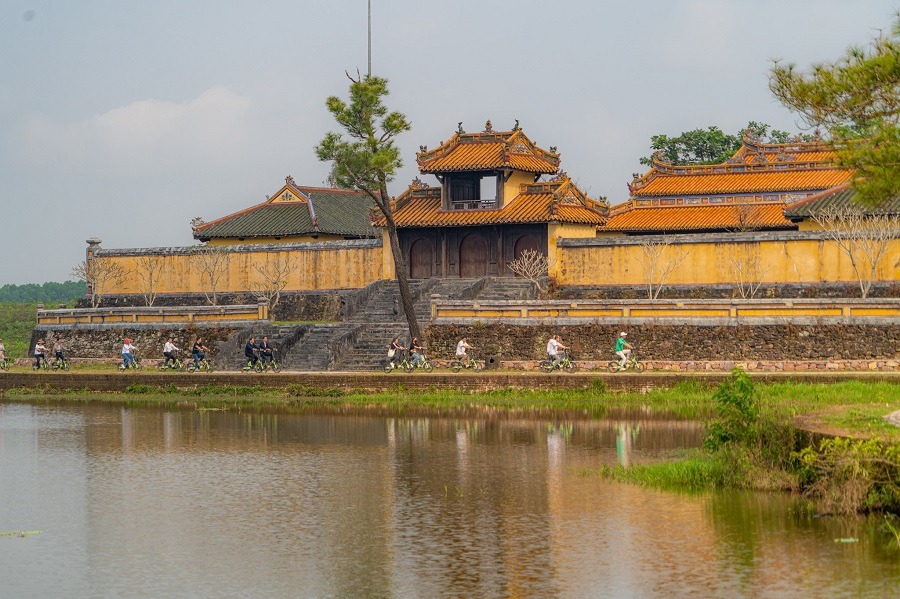
Unfortunately, this royal tomb suffered serious damage from the wars in Vietnam. Thankfully, some of its architectural components remained, which gave us concepts of the tomb’s core values. Therefore, the mausoleum went under renovation to rehabilitate major components of the complex.
So far, it has been open to visitors. Interestingly, a green tour to Gia Long Tomb has been launched for visitors since 2024. It allows visitors to rent a bike and experience the tomb in the most environmentally friendly way. You can contact the hotline at 0326220022 to ask for information.
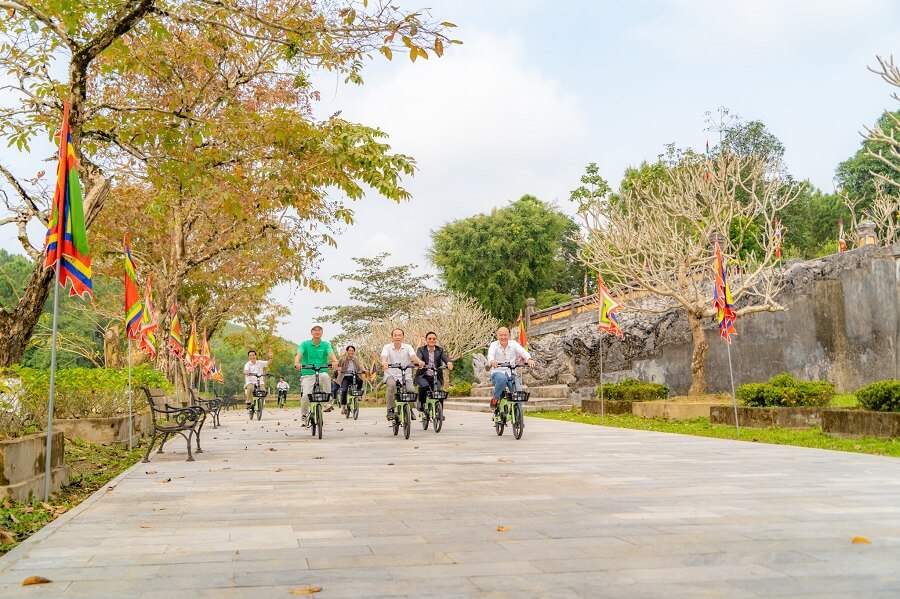
Tomb Of Gia Long’s Structure
The worship area of Gia Long Tomb lies on a large, flat hill. It gets the Dai Thien Tho Mount to be the beautiful natural screen in front. Behind the tomb, there are 7 mountains to be the post-occipital. Moreover, each side has 14 mountains, which look like a green dragon on the left and a white tiger on the right, or Tả Thanh Long Hữu Bạch Hổ, guarding the royal tomb.
Gia Long Tomb is divided into 3 areas: the emperor’s burial area in the middle, Bi Dinh Pavilion on the left, and Minh Thanh Shrine on the right.
Burial Area For Emperor And Empress
Among royal tombs in Hue, the burial area of Gia Long Mausoleum is the most special for its double grave. To show appreciation for the wife accompanying him through every hardship, Gia Long Emperor and Thua Thien Empress were buried in the same place. Above all, it symbolizes happiness and loyalty.
To reach this holy grave area, visitors will pass by two parts: the courtyard and bửu thành, the wall system enfolding it. Firstly, you will enter the royal courtyard, with some imposing stone sculptures of horses, elephants, and civil and military servants.
Next, a staircase of 7 levels shows up. After walking up to the 7 Honor Courtyard steps, you will see the burial site on the peak of the mountain. Additionally, it is protected by the bửu thành wall system, with a locked door only opening on special occasions.
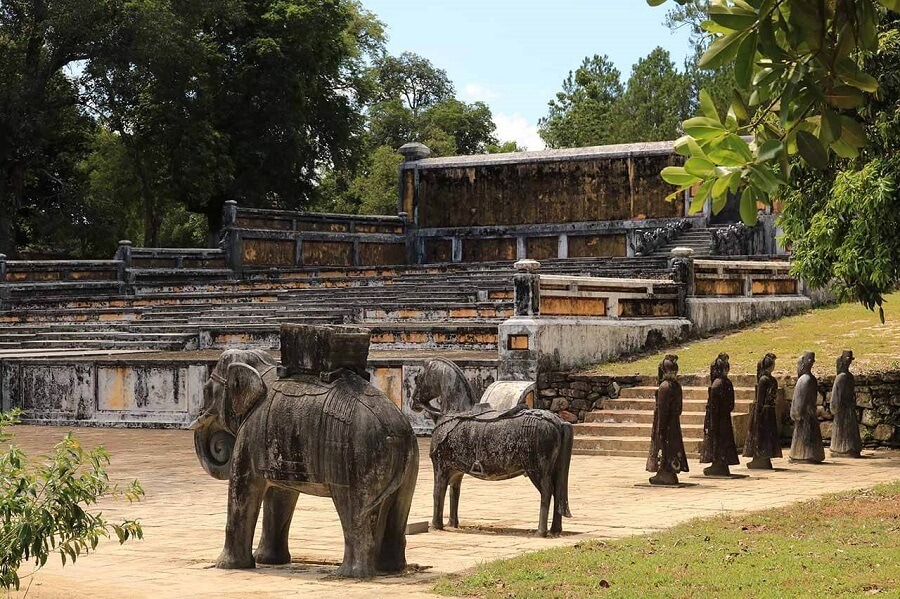
Minh Thanh Shrine
On the left of the burial area is the Minh Thanh Shrine, the worship place of the Gia Long Emperor and Thua Thien Empress. The shrine functions as a place to put their altars and important memorabilia. Despite worn-out details with time, it offers visitors a fresh environment of green trees, open air, and a neatly arranged layout.
Similar to the burial site, the Minh Thanh Shrine has a simple but solid construction rather than flashy decorations like other royal tombs. In the past, Minh Thanh Shrine worshiped many memorabilia associated with King Gia Long’s life of war, such as hats, belts, and saddles. Moreover, you can visit this solemn temple with respect and make some prayers in front of their altars.
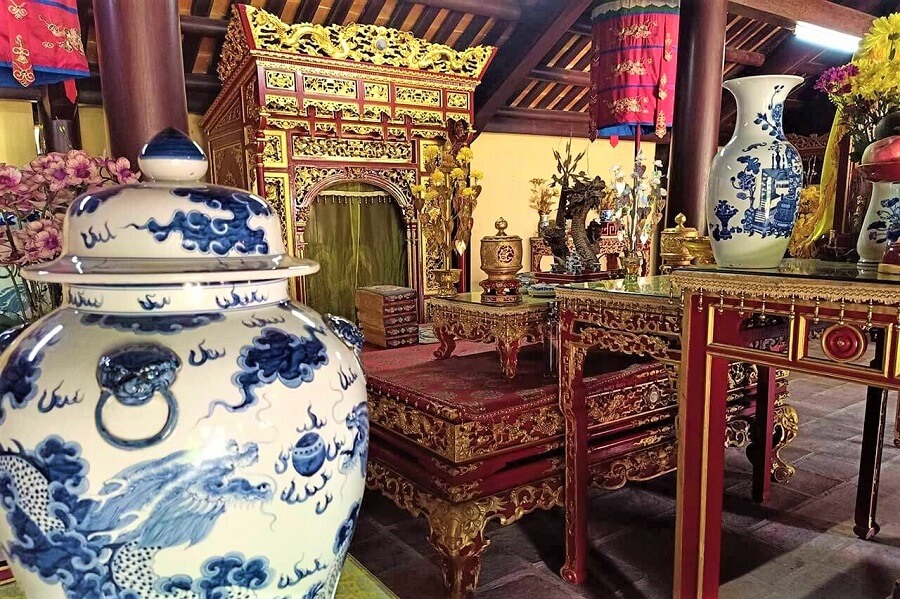
Bi Dinh Pavilion – Merit Records
On the left of the tomb is Bi Dinh, the records of the important merits of Gia Long Emperor. Almost every royal tomb of the Nguyen Emperors has such a merit record site like this. Its setting features mature pine trees, creating a peaceful and relaxing space.
You will see a large stele, namely Minh Đức Thần Công, which shows the appraisal inscription of Minh Mang Emperor for Gia Long’s (his father’s) life and accomplishments. Interestingly, it was carved so elaborately and exquisitely that the characters on it are still clear after nearly 200 years.
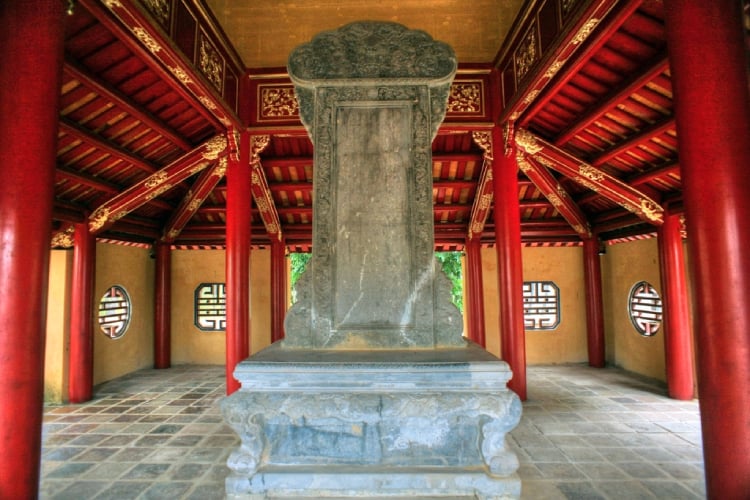
Burial Areas For Royal Family Members
Besides the main three parts, Gia Long Royal Mausoleum accommodates burial areas for his family members. Plenty of Nguyen Dynasty royal family members, such as Gia Long’s mother (known as Thoai Thanh Tomb) and elder sister (Hoang Co Tomb), were buried here. Surprisingly, these burial sites made the Gia Long mausoleum’s perimeter rise to roughly 11,234 meters.
Travel Tips For Visitors
- On your visit to Gia Long Tomb or any religious sites, you should care about the dress code. Particularly, you ought to wear polite and less revealing clothes to show respect for the sites and local customs.
- As you will move around a lot while visiting the tomb, you should wear light clothes and avoid bulky things. We suggest wearing T-shirts, over-kneed pants, and comfortable sneakers.
- Also, we recommend you apply sunscreen or use hats, sunglasses, and long-sleeved jackets for this outdoor trip.
- You should buy combo tickets or join tours with a combination of many sights for better convenience. Combo tickets save you some money. Tours offer good guides and transport.
- You can refer to combo tickets and other fee information on the blog Hue Entrance Fee.
- Moreover, you can learn more about the most fabulous Hue Royal Tombs at Top Hue Royal Tombs You Must Visit.
Conclusion
Despite its more remote location than other royal tombs in Hue City, Gia Long Tomb shines with its own features. The tomb shows breathtaking beauty thanks to endless mountain ranges, pine forests, and paths among green grass and wonderful wildflowers. If you’re looking for a less-crowded tourist attraction, Gia Long Emperor Tomb will satisfy you with its ideal serenity.



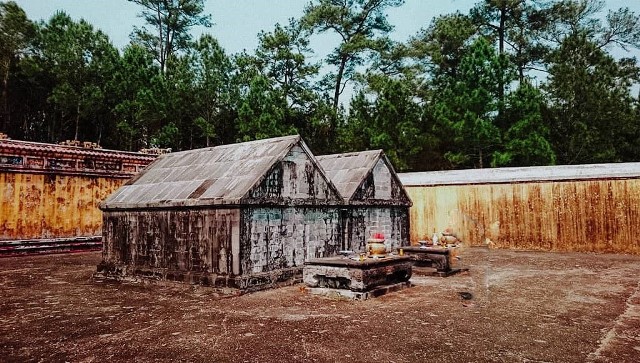


Pingback: TOP HUE ROYAL TOMBS YOU MUST VISIT - Culture Pham Travel
Pingback: Minh Mang Tomb in Hue - Culture Pham Travel
Pingback: HUE Entrance Fee Monuments in 2022 - Culture Pham Travel